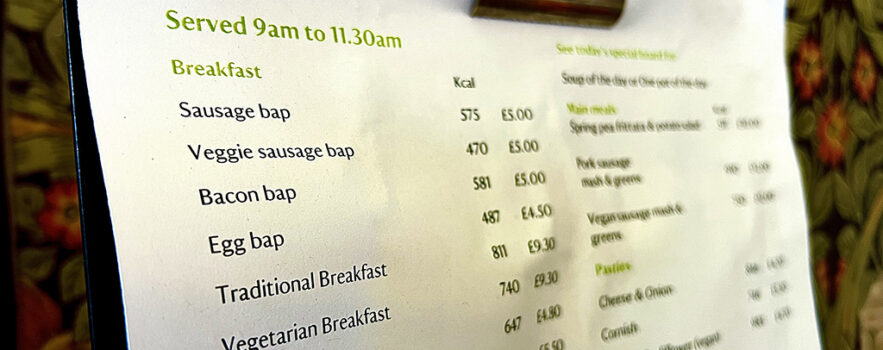Since the introduction of calorie labelling in chain restaurants in 2022 there has been only a 2% reduction in the energy content of food available, according to new research published today in BMJ Public Health. This research was funded by the National Institute for Health and Care Research (NIHR).
The researchers, led by Dr Michael Essman and Professor Jean Adams at the MRC Epidemiology Unit, also found that this reduction was primarily due to restaurants simply swapping some higher calorie menu items for slightly lower calorie items, rather than reformulating existing menu items. They observed no significant changes in items that were available continuously before and after the requirement for calorie labelling came into effect.
Eating at restaurants, fast food outlets, and ordering takeaways – collectively called ‘chain restaurants’ – is obviously a common occurrence; however, it is associated with poorer dietary quality, weight gain, and obesity. In England, calorie labelling regulations require food and non-alcoholic drink outlets with at least 250 employees to display kilocalories on their offerings
The researchers used MenuTracker, a nutritional database of food prepared out of the home, to identify changes made to the average energy content of food items after the requirement for calorie labelling was implemented, and to assess what proportion of these food items exceed recommended energy intake of 600 kcal per meal. The researchers analysed Menutracker data collected for 31,045 menu items from 78 restaurant chains in September 2021, and again a year later in September 2022 after the regulations had come into force.
The finding that the chain restaurants did not reformulate menu items to reduce calorie content contrasts with the drop in sugar content in soft drinks sold in the UK after the introduction of the Soft Drinks Industry Levy in 2018. The researchers suggest that this may be because reformulating drinks is easier for manufacturers, and that large outlets are reluctant to reduce portion size because of how customers might perceive this change.
The researchers commented:
We found more evidence of menu change rather than reformulation, with items removed from menus being higher energy than continuous items. Thus, the impact of a calorie labelling policy on food may differ from other policies like the Soft Drinks Industry Levy, which created an economic incentive for, and was associated with, substantial reformulation. If food industry actors successfully market out-of-home eating as a treat where customers should indulge in high-calorie options, then business may not be incentivised to reduce the kcal of items offered.”
The researchers noted that only 80% of outlets displayed any calorie labelling and only 15% met all implementation requirements, and this imperfect implementation may contribute to the limited impact they observed, along with low intention from local authorities to proactively check implementation of the labelling requirements in chains. They suggest several potential strategies to make lower calorie options more attractive, including price adjustment and using interpretive labels, such as traffic light labels, rather than just calorie information.
Reference
• Essman M et al. Changes in energy content of menu items at out-of-home food outlets in England after calorie labelling policy implementation: a pre–post analysis (2021–2022). BMJ Public Health 07 October 2025; DOI: 10.1136/bmjph-2024-001905

 MRC Epidemiology Unit
MRC Epidemiology Unit